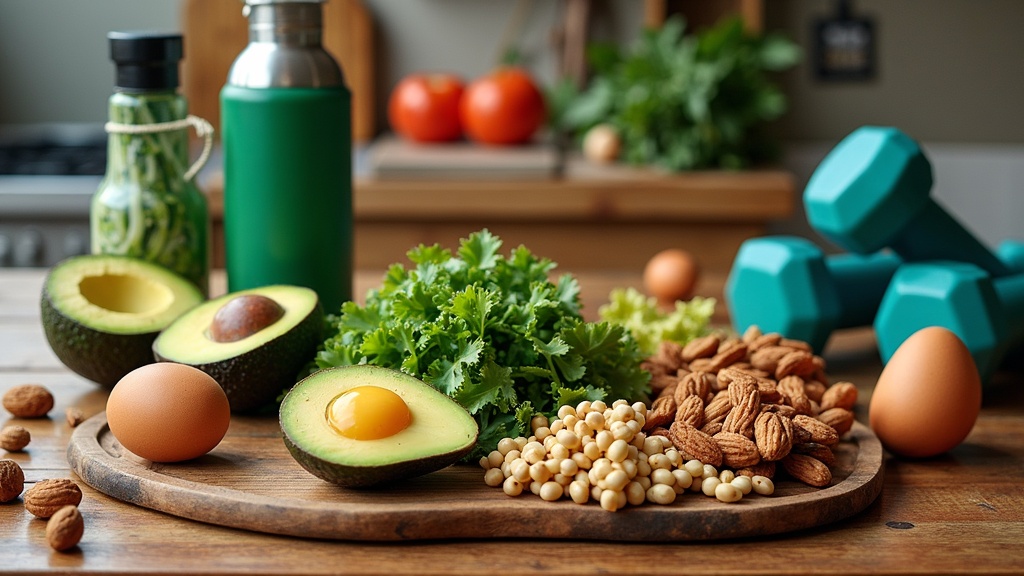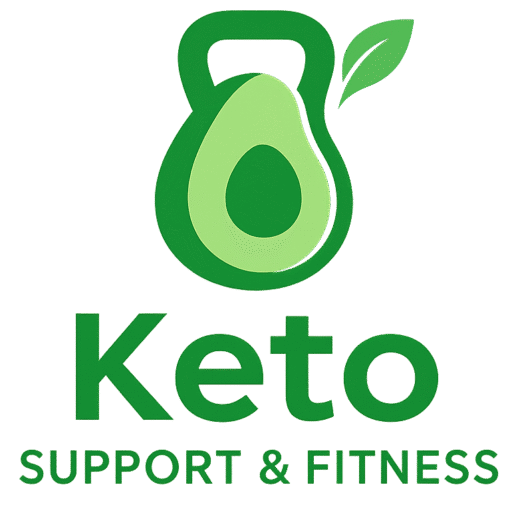
Switching to a keto lifestyle is a pretty big change, but pairing it with the right fitness plan can make things even more effective. Lots of people want to lose fat, gain energy, and feel stronger, but just focusing on the keto diet or just working out doesn’t always get the job done. Combining the two in a smart way helps you reach your goals faster and feel better overall.
First starting out, I found it easy to make mistakes, like training too hard without adjusting my food, or not getting enough electrolytes and dealing with headaches. There are a few basics everyone should know before jumping into a keto fitness routine. So, I’ve put together this step-by-step guide on what actually works, including tips for beginners and ideas to keep you motivated. You’ll see how you can fuel your workouts, recover like a champ, and tailor everything to your own goals.
No matter what your fitness background is, using these steps helps you create a keto workout plan that makes sense and actually fits your life, not just the other way around.
Set Your Fitness Goals on Keto
Before you get into the details of workouts and meal planning, it helps to get clear on what you’re actually trying to achieve. Keto can be really handy for fat loss, but it’s also possible to use it for maintaining muscle, boosting stamina, or just staying healthy. Your workouts might look different depending on which path you’re on.
Questions to Ask Yourself:
- Do I want to lose weight, gain muscle, or just have more energy?
- How many days a week am I willing to work out?
- Am I brand new to fitness, or do I already have some experience?
- Will I be doing this at home, at the gym, or outdoors?
Common Keto Fitness Goals:
- Burning body fat while keeping strength
- Improving energy and focus during the day
- Staying fit for life, not just a short-term goal
- Building lean muscle without gaining fat
Getting clear on your priorities helps figure out what kind of workouts and meal planning strategies will work the best for you. Many people find writing down their primary goal helps keep them on track through all the ups and downs. If your main focus changes as you progress, that’s normal—just be flexible and adjust your plan as needed.
Plan Your Keto Workouts
Some workout routines work better with a lowcarb lifestyle than others. While you can still crush a wide range of workouts on keto, a few tweaks help make everything smoother, especially for the first few weeks when your body is still adapting to burning fat for fuel.
Best Types of Workouts for Keto:
- Strength Training: Lifting weights, resistance bands, or bodyweight exercises. Great for holding onto muscle as you lose fat.
- Lowintensity Cardio: Walking, hiking, swimming, or biking at a steady pace. Helps burn fat and is easier on low carb days.
- HIIT (HighIntensity Interval Training): Short bursts of hard work with recovery in between. Can be done a couple of times a week for extra fat burning.
Weekly Keto Fitness Example:
- Monday: Upper body strength workout
- Tuesday: 30minute brisk walk
- Wednesday: Lower body strength workout
- Thursday: HIIT workout (20 minutes)
- Friday: Rest or gentle stretching
- Saturday: Hike or swim
- Sunday: Rest
Trying out different routines lets you figure out what feels best. A common mistake is doing too much too soon. Especially in your first two keto weeks, it’s totally normal to take things slower until your energy ramps up again. If you start feeling overly fatigued, shorten your sessions or cut back a bit—you’ll make more progress over time if you let your body gradually adapt.
Fuel Your Workouts. Keto Style
Nutrition is a big part of the keto fitness equation. Without enough energy (calories), protein, and electrolytes, even the best workout gets tough fast. Keto shakes up how your body makes energy, so you may need to adjust the timing and type of food you eat around workouts. Don’t be afraid to add extra salt to your food or drink an electrolyte beverage before hitting the gym, especially if you sweat a lot during exercise. Your body will thank you!
Simple PreWorkout Tips:
- Eat a small meal or snack with healthy fats and moderate protein 1–2 hours before working out.
- Some people prefer to exercise fasted (before breakfast), which is easier on keto than a traditional carbbased diet.
- If you want a little boost, try coffee or green tea without sugar about 30 minutes before moving.
PostWorkout Recovery:
- Get enough protein (about 15–30g depending on your weight and goals) to help build and repair muscle.
- Keep drinking water; keto workouts can make you lose water faster.
- Add sodium, magnesium, and potassium with an electrolyte drink, bone broth, or salty foods like pickles if you start feeling weak or crampy.
KetoFriendly Foods to Keep Around:
- Boiled eggs, avocado, and cooked chicken breast
- Homemade fat bombs (think coconut oil, nuts, and unsweetened cocoa powder)
- Lowcarb protein shakes or collagen peptides
Experiment with meal timing and food choices to see what gives you the most steady energy, both in and out of the gym. Try keeping a food journal for a week or two so you can look back and notice patterns—sometimes small changes make a big difference.
Watch Out for Common Keto Fitness Mistakes
Lots of people fall into similar traps when they first pair keto with a new exercise routine. I’ve run into most of these myself, and they can be sorted out with a bit of planning.
Avoid These Mistakes:
- Not eating enough calories, leading to tiredness or muscle loss
- Jumping straight into long or really hard workouts before your body has adapted to keto
- Forgetting about electrolytes; low carb diets drop a lot of water and minerals at first
- Comparing yourself to carb-fueled workout buddies and feeling discouraged
Nobody gets everything perfect the first time. The main thing is to listen to your body and make changes if you start feeling off. If you notice lingering fatigue, headaches, or trouble sleeping, adjust your nutrition and rest before ramping up your workouts again. Gentle movement, stretching, or yoga can help you stay active without overdoing it early on.
Stay Motivated, Track Your Progress
Motivation can come and go; progress sticks around longer if you keep some kind of record. I like to use a notebook or an app to jot down workouts, food, mood, and energy levels. After a few weeks, these notes really help spot what’s working, and what needs tweaking.
How to Track Progress:
- Write down workouts, how hard they felt, and how energized you felt after
- Track weight, measurements, or photos if body changes are part of your goal
- Keep note of sleep, stress, and cravings, since these can affect results on keto
Tips for Staying Motivated:
- Join an online keto or fitness group for support and tips
- Set smaller, weekly goals (like hitting 3 workouts, or cooking all your dinners at home)
- Reward yourself with a nonfood treat when you hit a goal (maybe a new water bottle or workout playlist!)
Don’t forget to look back every month and celebrate your progress, even if it’s just sticking with your plan or feeling a little more confident in your workouts. Everyone’s adventure is different, and what motivates you may change over time.
Common Keto Fitness Questions
Can I gain muscle on keto?
Yes, as long as you eat enough calories and get enough protein, building muscle is possible. You might see changes a bit slower than with a carbheavy diet, but it definitely happens. Focusing on progressive resistance with your strength training and getting plenty of healthy fats for energy helps support muscle gain.
Do I need supplements for keto fitness?
Some people find magnesium, sodium, and potassium supplements helpful to avoid cramps and stay hydrated. If you’re eating a balanced keto diet, you might not need much else, but protein powders and MCT oil can fit in if it makes things easier. Always check with a healthcare professional if you plan to add new supplements or have any health conditions.
Should I eat more carbs around workouts?
Some people who do lots of intense exercise try “targeted keto,” which means adding a small amount of carbs right before a workout. If you’re just starting out, try a few weeks of regular keto and see how you feel first. Everyone’s body responds differently, but targeted carbs can work for more advanced athletes. If your performance feels stuck after a month or so, experiment with a small carb portion before intense sessions and monitor how you respond.
Building Your Keto Fitness Plan
Getting great results from keto plus fitness is all about matching your nutrition to your training, not the other way around. Small, steady changes work way better than trying to overhaul everything at once. The main things I always recommend: set a goal that matters to you, track your wins, stay curious, and don’t be afraid to tweak things as you go.
If you ever hit a roadblock, it’s probably just a sign your body needs a different balance; maybe more food, more rest, or switching up your workouts. It took me a few tries to get it right, and even now, I still look for ways to fine-tune things so my plan keeps working with my life. Listen to your body’s feedback—it’ll guide you to what works best.
Whether your goal is to lose weight, add muscle, get energized, or just enjoy your workouts more, the right combo of keto eating and smart exercise can definitely help you get results. You don’t have to go it alone; there are plenty of communities, coaches, and apps out there to support you on your adventure. Adjust, try new things, and have fun with the process. Your best keto fitness life is just a step away!
